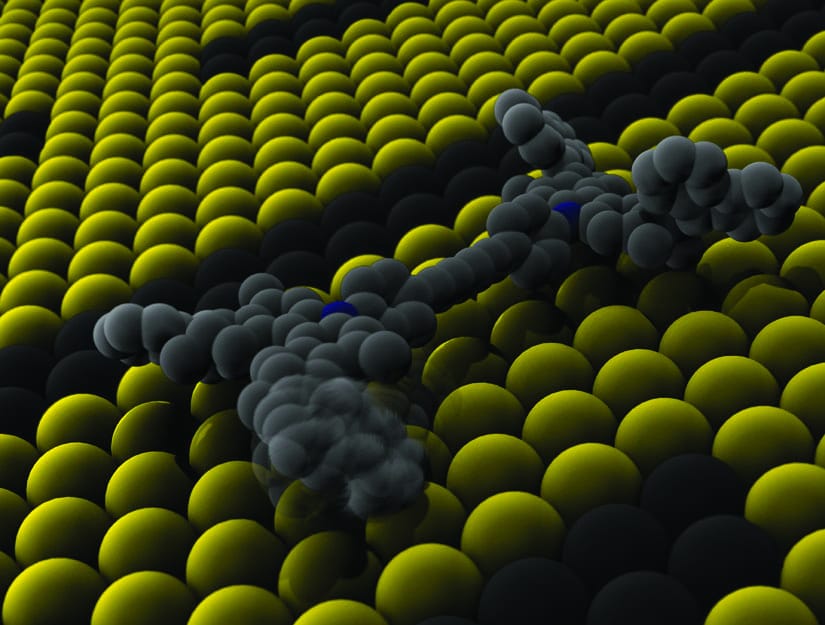Nanocars with four-wheel drive
Four molecular motors come together to make molecular car

Researchers at the University of Groningen, Netherlands have announced that they have succesfully produced a single-molecule ‘car’, capable of moving by use of its four ‘wheels’ when excited by a scanning tunnelling microscope (STM). This announcement follows previous research by the group, led by Ben Feringa, into light-driven molecular motors, first reported in 1999.
Molecular motors use light or other stimulation to rotate a hydrocarbon group around a double bond. After rotation to form an unstable isomer, an exothermic isomerisation process causes the groups to rotate into a more stable position (helix inversion), with the result of movement. This process can be repeated to return to the original configuration.
This new research involves a molecule designed with four of these motors about a central axis. Electrical pulses produced by the STM excite the motors, and cause it to move across a copper surface; the direction of the pulses can be controlled by the operator of the STM, and so precise control over the movement is possible.
The group experienced difficulty in making all the motors work in tandem – they reported that perfectly straight movement is not possible. However, their calculations predicted a maximum of 7nm of movement per 10 STM pulses; with 6nm of movement being experimentally observed, meaning that the ‘swerving’ of the car is not as a significant problem as could have been. The molecule requires a STM pulse of 500 millivolts or greater, so imaging the molecule is possible without movement by use of a lower voltage. In addition, negative voltages caused no movement.
The direction of motion can be controlled by the configuration of the molecule. Depending on the orientation of the groups on each side of the axis, the correct isomer can both produce forwards movement and no movement, depending on the ‘landing’ of the molecule – if the molecule is not correctly absorbed in the right orientation, movement is prevented due to the front ‘wheels’ moving in the opposite direction to those at the back. In addition, isomers in an incorrect configuration produce haptic movement, due to the onside and offside of the ‘car’ moving in alternative directions.
Conditions for the molecular ‘car’ prohibit commercial use at present (vacuum conditions and temperatures of 7K was necessary), however, lead author Tibor Kudernak told the BBC that this was the next problem to resolve.
DOI: 10.1038/nature10587








